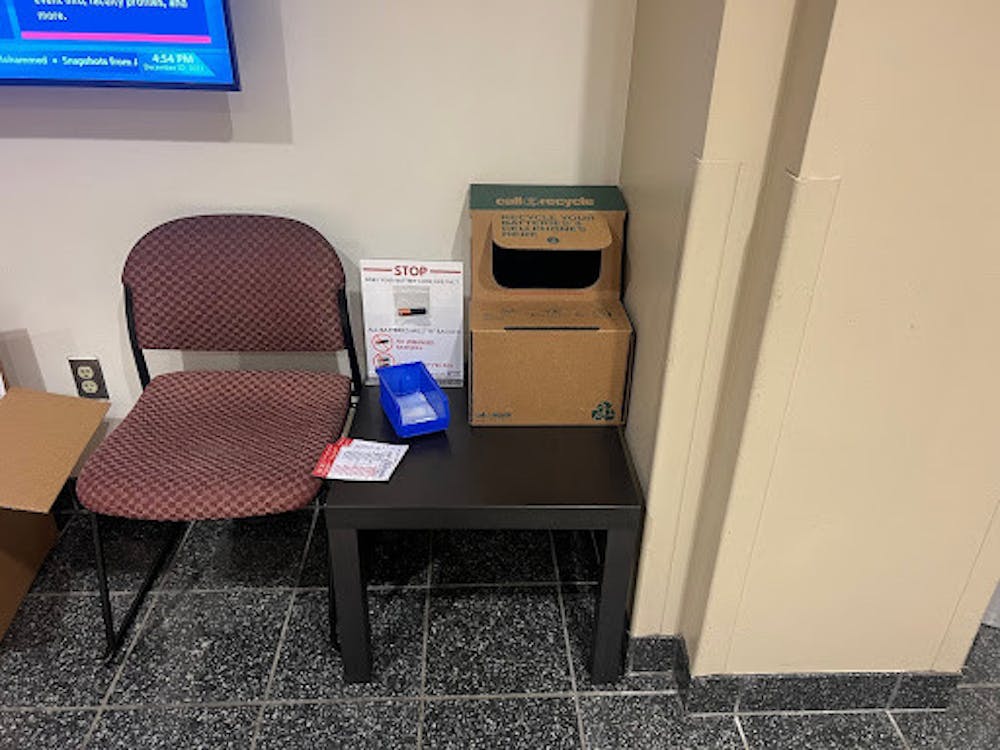Many people struggle with what to do with their old electronic products in the event of near-constant new releases and upgrades. If you opt to purchase the latest iPhone, it is important to follow the proper recycling process for your old phone.
Many iPhone users are unaware that iPhone batteries should not be placed in the general trash, but instead, the batteries should be separated from general waste and recycled at specific battery recycling sites. The steps for safely removing an iPhone battery vary across models, so it is important to research the proper steps for your model. Technology stores, like Best Buy or Apple, offer battery removal services as well as recycling options after removal.
Apple uses lithium-ion batteries in iPhones, which have become popular batteries across different modes of technology, including electric cars. However, lithium batteries pose a threat to the environment.
These batteries use materials including cobalt, graphite and lithium, all of which are considered “critical resources” by the U.S. Environmental Protection Agency (EPA). Throwing out iPhone batteries instead of recycling them wastes these critical resources.
“Batteries, when disposed of incorrectly, can leach into the environment and waterways,” said professor K.L. Knee, the chair of AU’s Department of Environmental Science. Lithium-ion batteries, specifically, contain heavy metals such as nickel and copper, which are harmful to the environment.
The production of lithium-ion batteries also places an immense strain on water levels in the nations that mine these materials.
According to the UCLA Institute of the Environment and Sustainability, mining one ton of lithium requires 2.2 million liters of water. To make matters worse, lithium-ion batteries are extremely flammable. When tossed in the garbage with general household waste, the batteries have the dangerous potential to catch fire.
It is vital that phone users recycle these batteries to ensure safety. So where can you recycle your old iPhone battery?
The best place to start is at any Apple store. Apple will properly recycle the lithium-ion battery in your iPhone by transferring the battery to a new iPhone or disposing of it in a safe, environmentally friendly manner. You may even be able to get a discount on your new iPhone after trading in your old phone.
If the Apple Store is inaccessible, the University offers battery recycling and other E-waste points throughout campus.
The University’s Office of Zero Waste states that “battery recycling tubes are located in central areas in most buildings on campus. Look for tall clear tubes near entrances and exits.” These recycling tubes are accessible to every AU student and provide a quick, easy way for students to dispose of their old iPhone batteries.
While understanding the importance of recycling old iPhone batteries is crucial, it is also important to consider alternative options. Consider whether you truly need the new iPhone 15 before purchasing it.
Knee recommends that “students should consider whether they can reduce their purchases of new iPhones and continue to use their current iPhone, if possible.”
You can also donate your old iPhone to organizations such as the DC Coalition Against Domestic Violence, which clears the phone and programs it to solely place 911 calls, then distributes the phones to domestic violence victims. Homeless shelters throughout D.C., such as DC Doors or Shirley’s Place, also accept used iPhone donations for their residents.
If your old phone is still functional, consider donating it so someone else can use it. But, if you decide to invest in the new phone, be sure to properly recycle your old battery at one of the many recycling sites conveniently located across campus.
“I have seen recycling places for batteries all around campus buildings,” said Laurel Impello, a freshman in SIS. “There is one in the Library stairwell, which seems very convenient for students.”
This article was edited by Soumya Sahay, Patricia McGee and Abigail Pritchard. Copy editing done by Luna Jinks and Isabelle Kravis.





